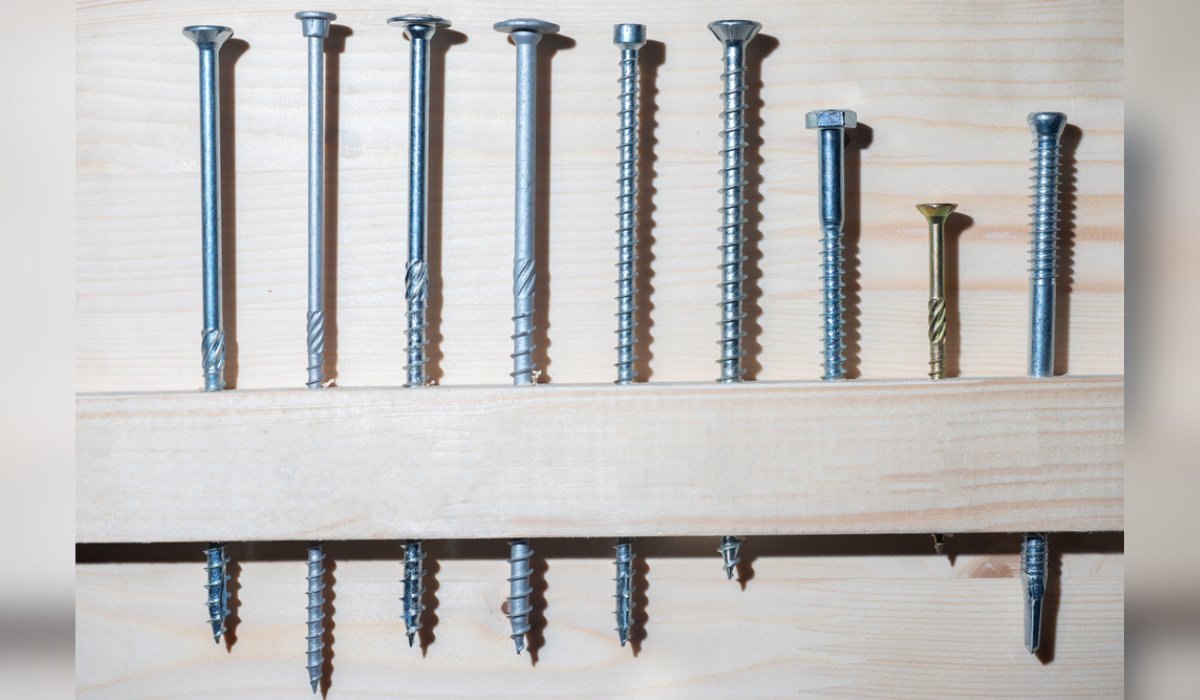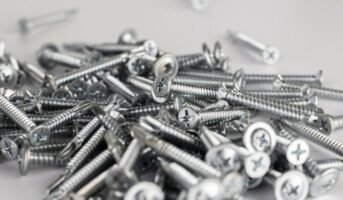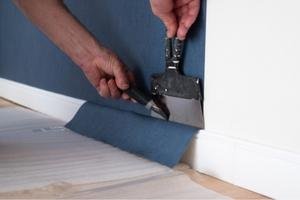Screws are one of the most versatile and essential tools in any toolbox. These small but mighty hardware pieces are used in various applications, from construction and carpentry to electronics and even fashion. They come in different sizes, shapes, and materials, making them suitable for multiple tasks. A standard type of screw has a cylindrical shaft with a spiral groove, known as threads, running along its length.
The threads on a screw allow it to grip and hold materials together. The head of a screw can be flat, rounded, or even shaped like a star. The material of a screw can also vary, with options such as steel, brass, and even plastic. These small but powerful tools have been used for centuries and will continue to be essential to our everyday lives. Whether a professional contractor or a DIY enthusiast, screws are a must-have in your toolkit.
See also: Types of hammers: Different types and their applications
Screws: Materials
Many different materials can be used to create screws, including:
- Steel: It is the most common material for screws, known for its strength and durability.
- Stainless steel: It is a type of steel resistant to rust and corrosion, making it a popular choice for outdoor and marine applications.
- Brass: It is a soft, strong, and corrosion-resistant metal often used in decorative applications.
- Aluminium: It is lightweight and corrosion-resistant but less strong than steel.
- Bronze: It is known for its corrosion resistance and high strength, often used in marine and industrial applications.
- Titanium: It is extremely strong and corrosion-resistant but also more expensive than other materials.
Some screws are also coated with various materials to enhance their resistance to corrosion and wear, such as zinc, black oxide, and galvanisation.
Types of screws
There are many screws, each designed for specific purposes and applications. Here are a few examples:
Wood screws

Source: Pinterest
These screws have a sharp point and tapered shank, making them easy to drive into wood. They also have wide, coarse threads that grip the wood tightly.
Sheet metal screws
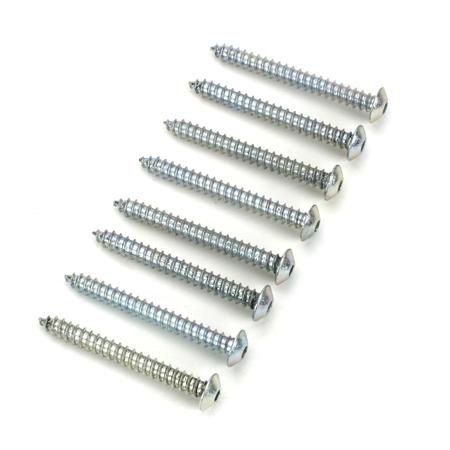
Source: Pinterest
These screws have a sharp point and fine threads, making them suitable for attaching thin metal sheets or other materials.
Machine screws
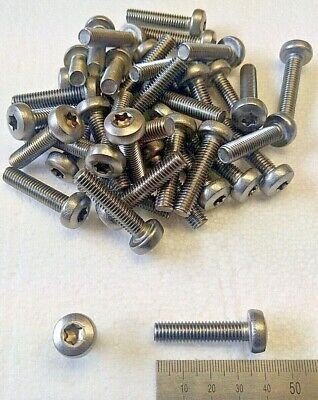
Source: Pinterest
These screws have a cylindrical shaft and are typically used with nuts or threaded holes to fasten metal parts together. They come in various thread types, such as UNF, UNC, M, etc.
Lag screws
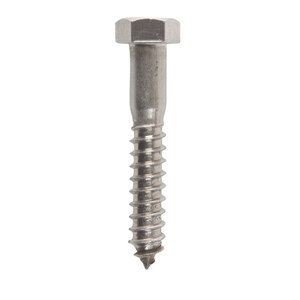
Source: Pinterest
Also called lag bolts, these screws have a square or hexagonal head and are used to secure heavy timbers or attach wood to masonry.
Hex head cap screws
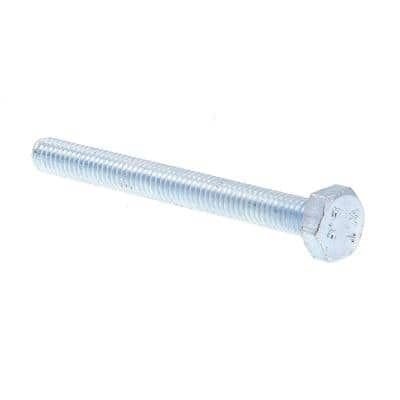
Source: Pinterest
These screws have a hexagonal head and are driven with a wrench. They are frequently employed in manufacturing and construction.
Socket screws
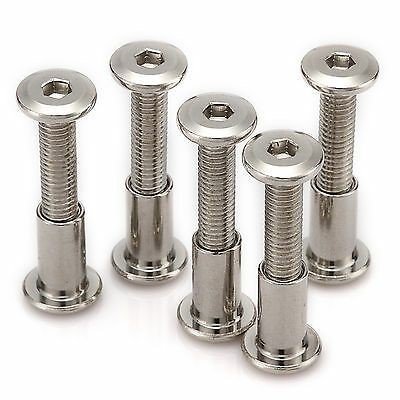
Source: Pinterest
Socket screws, also known as Allen head screws, have a hexagonal recess in the head for a driver to fit into, allowing for easy tightening or loosening. They are commonly used in applications where a low profile and a clean appearance are desired.
Carriage screws

Source: Pinterest
Carriage screws are fasteners that secure wheels and axles to a frame or structure. They are typically made from steel, feature a threaded shank and a head, and are available in various sizes and shapes to meet specific needs. Carriage screws are an essential component in constructing carriages, wagons, and other wheeled vehicles.
Self-tapping screws
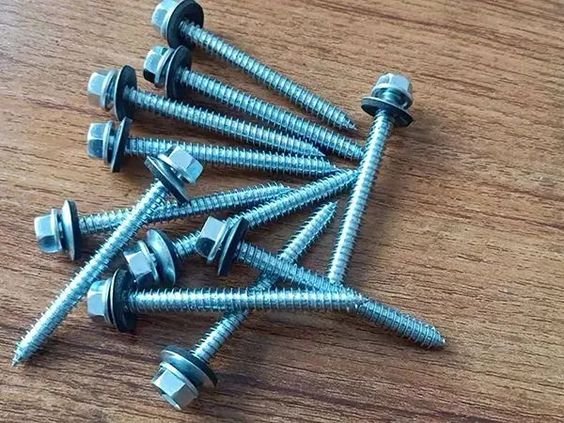
Source: Pinterest (HDJG Anchors)
Self-tapping screws serve as valuable tools for both DIY enthusiasts and professionals. These screws have the capability to create internal threads as they are driven into the designated material. However, it’s important to note that self-tapping screws may not always eliminate the risk of splitting certain soft materials, necessitating the use of a pilot hole in such cases. A special subtype of self-tapping screws is known as self-drilling screws, featuring a drill bit tip. These screws excel because they do not require a prior pilot hole for installation. They find application in diverse scenarios and may overlap with other screw types based on their thread design. For instance, you can discover self-tapping screws tailored for sheet metal or opt for self-drilling screws designed specifically for DIY MDF construction projects.
Concrete screws
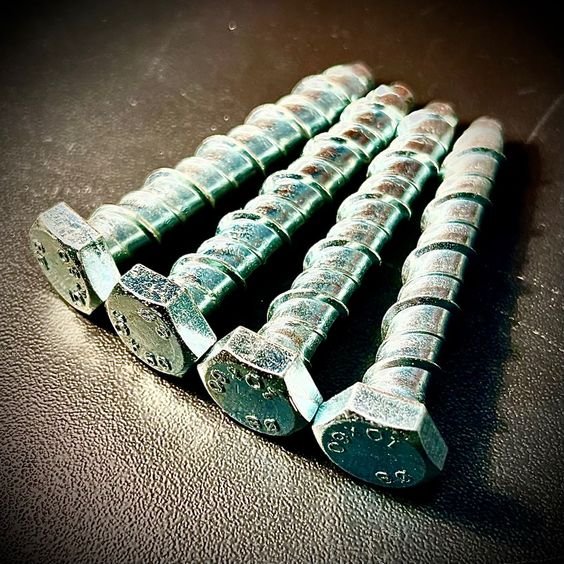
Source: Fixball UK (Pinterest)
Concrete screws are primarily employed for securely fastening medium to high-load applications onto surfaces made of concrete, solid brick, hollow brick, or stone. They are often referred to as concrete anchors, concrete bolts, or concrete screw anchors. These purpose-built screws are engineered to deliver robust and dependable anchoring while ensuring swift and efficient installation, even in challenging substrates. Notably, they can be securely affixed in proximity to the edge of concrete surfaces without the risk of deformation. Various styles of concrete screw anchors are available, each suited for specific applications and usage scenarios.
These are just a few of the many other types of screws available for specific applications, such as speciality screws for electronics and medical devices.
Applications of screws
- Construction and building: Screws are widely used in construction and installation to attach and secure materials such as wood, metal, and plastic. They fasten wooden beams, joists, framing, metal studs, roofing, and siding.
- Furniture assembly: Screws are commonly used to assemble furniture such as chairs, tables, and cabinets. They are used to fasten legs, frames, and hardware to the main structure of the piece.
- Mechanical and electrical equipment: Screws are used to fasten parts and components in various mechanical and electrical equipment such as automobiles, appliances, and electronics.
- Medical equipment: Screws are used to fasten parts and components in medical equipment, such as surgical instruments, x-ray machines, and hospital beds.
- Industrial machinery: Screws are used in various industrial machineries, such as conveyors, pumps, and compressors, to fasten and secure parts and components.
- Sporting equipment: Screws are used to fasten and secure parts and components in a wide range of sporting equipment, such as bicycles, skis, and snowboards.
- DIY projects: Screws are widely used in DIY projects such as home repairs, woodworking, and crafting.
FAQs
What are screws used for?
Screws are used to fasten materials together by threading into a material and tightening to hold the two pieces together. They are commonly used in construction, woodworking, and other industries.
What are the different types of screws?
There are many different types of screws, including wood screws, machine screws, sheet metal screws, self-tapping screws, and drywall screws. Each type is designed for a specific use and material.
What is the difference between a screw and a bolt?
A screw is a fastener with threads that are cut into it and designed to be screwed into a material, while a bolt is a fastener with threads on the outside and is designed to be inserted into a hole with a nut to hold the two pieces together.
How do I choose the right size screw for my project?
The size of the screw you need will depend on the thickness and type of material you are working with. A general rule of thumb is to use a screw at least 1.5 times the thickness of the material.
How do I remove a stripped screw?
Removing a stripped screw can be difficult, but there are a few methods you can try, such as using a screwdriver with a larger handle for more leverage, using a pair of pliers to grip the head of the screw, or using a screw extractor tool to remove the screw.
Can screws be reused?
Screws can be reused, but it is important to note that repeated use can cause wear and tear on the threads, making it harder to remove the screw or causing it to become loose over time. It is best to use new screws when starting a new project.
| Got any questions or point of view on our article? We would love to hear from you. Write to our Editor-in-Chief Jhumur Ghosh at jhumur.ghosh1@housing.com |
Priya Banerjee, a writer with a keen eye on the property market, she deciphers the ever-changing trends in residential real estate. Priya excels at simplifying complex real estate terms, making them easy for everyone to understand. Her well-researched advice helps buyers and investors understand complex topics.
